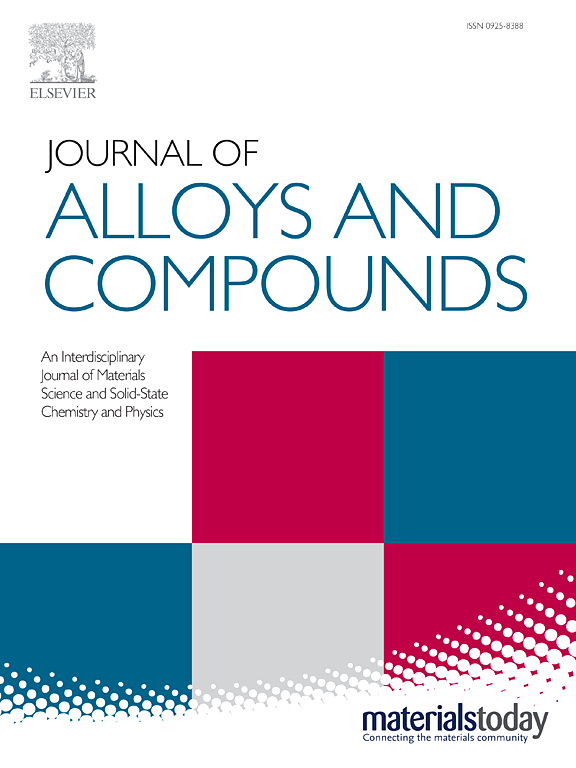In-situ monitoring the structural pathway of a Ti-based alloy from metallic liquid to metallic glass
IF 6.3
2区 材料科学
Q2 CHEMISTRY, PHYSICAL
引用次数: 0
Abstract
A metallic glass is formed when a molten metallic alloy is cooled rapidly enough that crystallisation is avoided. However, the way the atomic structure of the liquid converts to that of the glass is generally unknown. The main challenge is the sufficiently fast experimental acquisition of structural data in the undercooled liquid regime necessitated by the high cooling rates needed to avoid crystallisation. In the present study, using aerodynamic levitation, the Ni-free Ti-based alloy Ti40Zr10Cu34Pd14Sn2 was vitrified in-situ in a high-energy synchrotron X-ray beam while diffraction data were acquired during cooling from above the liquidus temperature Tliq to well below the glass-transition temperature Tg. The structure in the undercooled liquid regime shows an accelerated evolution. Both the local order in the short (SRO) and medium range (MRO) increases rapidly as the undercooled liquid approaches Tg, below which the amorphous structure “freezes”. Nevertheless, distinct differences between the evolution of SRO and MRO were observed. The structural rearrangements in the undercooled liquid are found to be correlated with a rapid increase in viscosity of the metallic liquid upon cooling. The new findings shed light on the evolution of the atomic structure of metallic liquids during vitrification and the structural origins of the sluggish kinetics that suppress nucleation and growth of crystalline phases.

一种ti基合金从金属液体到金属玻璃的结构路径的现场监测
当熔化的金属合金迅速冷却以避免结晶时,就形成了金属玻璃。然而,液体的原子结构转化为玻璃原子结构的方式通常是未知的。主要的挑战是在过冷的液体状态下足够快的实验获取结构数据,这是避免结晶所需的高冷却速率所必需的。在本研究中,利用空气动力学悬浮,在高能同步x射线束中原位玻璃化了无ni的ti基合金Ti40Zr10Cu34Pd14Sn2,并在从液相温度Tliq以上到远低于玻璃化转变温度Tg的冷却过程中获得了衍射数据。过冷状态下的结构演化速度加快。当过冷液体接近Tg时,短时(SRO)和中量程(MRO)的局部阶数迅速增加,低于Tg时,非晶结构“冻结”。然而,在SRO和MRO的进化过程中观察到明显的差异。发现过冷液体中的结构重排与冷却后金属液体粘度的快速增加有关。这一新发现揭示了金属液体在玻璃化过程中原子结构的演变,以及抑制结晶相成核和生长的缓慢动力学的结构起源。
本文章由计算机程序翻译,如有差异,请以英文原文为准。
求助全文
约1分钟内获得全文
求助全文
来源期刊

Journal of Alloys and Compounds
工程技术-材料科学:综合
CiteScore
11.10
自引率
14.50%
发文量
5146
审稿时长
67 days
期刊介绍:
The Journal of Alloys and Compounds is intended to serve as an international medium for the publication of work on solid materials comprising compounds as well as alloys. Its great strength lies in the diversity of discipline which it encompasses, drawing together results from materials science, solid-state chemistry and physics.
 求助内容:
求助内容: 应助结果提醒方式:
应助结果提醒方式:


